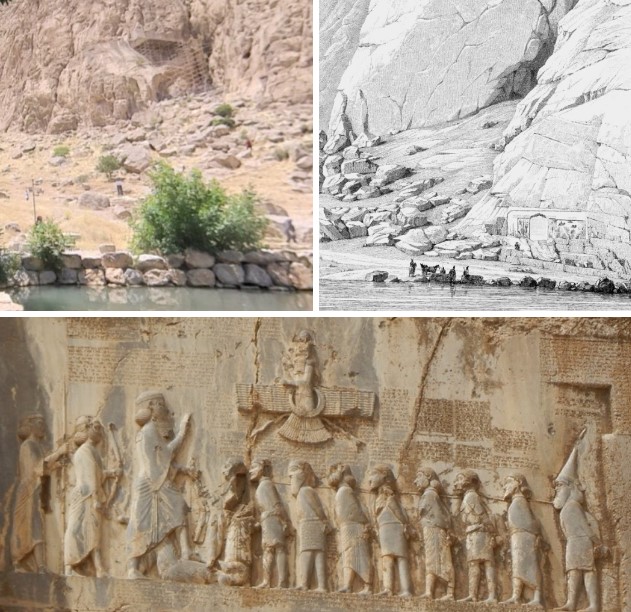The Achaemenids, the Founders of a Multicultural Empire
The Achaemenids (in Ancient Greek Achaimenidai and Latin Achaemenides) were a Persian dynasty that ruled over much of Western Asia, establishing also a vast and multiethnic empire that extended into Asia, Europe, and Africa.
The dynasty derived its name from its progenitor, Achaemenes, about whom little is known except that he lived around the mid-7th century BCE. The name appears in Old Persian cuneiform inscriptions (haxamanisiya) and was recorded by Greek historians.
Herodotus provides an account of how Cyrus the Great, the founder of the Achaemenid Empire, initiated the Persian revolt against the Medes, rallying the Persian tribes, including the Pasargadae, the Maraphii, and the Maspii, the first of which included the Achaemenid clan. Herodotus also details the other Persian tribes, such as the Panthialaioi, the Derusiaioi, and the Germanians (agriculturalists), alongside nomadic tribes like the Daoi, Mardians, Dropicans, and Sagartians:
Cyrus having heard this began to consider in what manner he might most skilfully persuade the Persians to revolt, and on consideration he found that this was the most convenient way, and so in fact he did: — He wrote first on a paper that which he desired to write, and he made an assembly of the Persians. Then he unfolded the paper and reading from it said that Astyages appointed him commander of the Persians; "and now, O Persians," he continued, "I give you command to come to me each one with a reaping-hook." Cyrus then proclaimed this command. (Now there are of the Persians many tribes, and some of them Cyrus gathered together and persuaded to revolt from the Medes, namely those, upon which all the other Persians depend, the Pasargadai, the Maraphians and the Maspians, and of these the Pasargadai are the most noble, of whom also the Achaimenidai are a clan, whence are sprung the Perseid kings. But other Persian tribes there are, as follows: — the Panthaliaians, the Derusiaians and the Germanians, these are all tillers of the soil; and the rest are nomad tribes, namely the Daoi, Mardians, Dropicans and Sagartians.)
- Herodotus, The Histories 1.125
It is unclear when and why the Achaemenids broke away from the Pasargadae tribe and migrated from the Persian highlands to the plains of Susiana to establish their kingdom on the ruins of the ancient Elamite Empire. This transition may be linked to the period when the Persians shifted allegiance to the Medes under Fraorte (655–633 BCE) after freeing themselves from Assyrian rule.

Behistun Inscription, describing conquests of Darius the Great in Old Persian, Elamite, and Babylonian languages. These reliefs and texts are engraved in a cliff on Mount Behistun (present Kermanshah Province, Iran).
The Behistun Inscription provides invaluable information about the dynasty's history. Darius I records:
King Darius says: My father was Hystaspes, the father of Hystaspes was Arsames, the father of Arsames was Ariaramnes, the father of Ariaramnes was Teispes, the father of Teispes was Achaemenes. King Darius says: For this reason, we are called Achaemenids. We have been noble for a long time; our lineage has been royal for a long time. King Darius says: Eight kings from our lineage were kings before me. I am the ninth. We are nine kings in two branches.
Cyrus the Great describes his lineage in Babylonian inscriptions:
I am Cyrus, king of Babylon, king of Sumer and Akkad, king of the four quarters of the world, son of Cambyses the great king, king of the city of Anshan, great-grandson of Teispes the great king, king of the city of Anshan.

Map of the expansion process of Achaemenid territories
According to tradition, the Achaemenids belonged to the Persian tribe of the Pasargadae, from which they separated to settle in Susiana, where their rise to power began. The dynasty reached prominence under Cyrus the Great (558–530 BCE), who extended Achaemenid rule over most of the East through the conquest of the Median Empire, Asia Minor, and Babylon. He was the first to be called "King of Persia."
After Cyrus, key Achaemenid rulers included:
- Cambyses II (530–522 BCE), who conquered Egypt in 525 BCE;
- Darius I (522–485 BCE), who established a robust political structure for the Persian Empire;
- Xerxes I (485–465 BCE), whose reign is tied to the unsuccessful attempt to subjugate Greece;
- Artaxerxes I (465–424 BCE);
- Darius III, who was defeated at Arbela (331 BCE) by Alexander the Great and assassinated the following year by his satraps. With Darius III's death in 330 BCE, the Achaemenid dynasty came to an end.
Last update: December 4, 2024
Go to definitions: A | B | C | D | E | F | G | H | I | J | K | L | M | N | O | P | Q | R | S | T | U | V | W | X | Y | Z
 DONATE
DONATE 
See also: